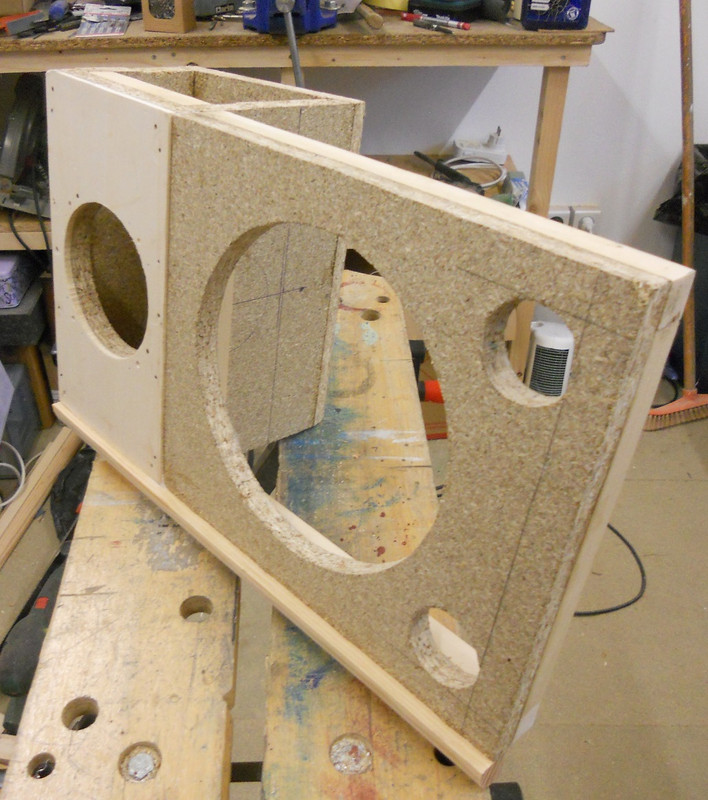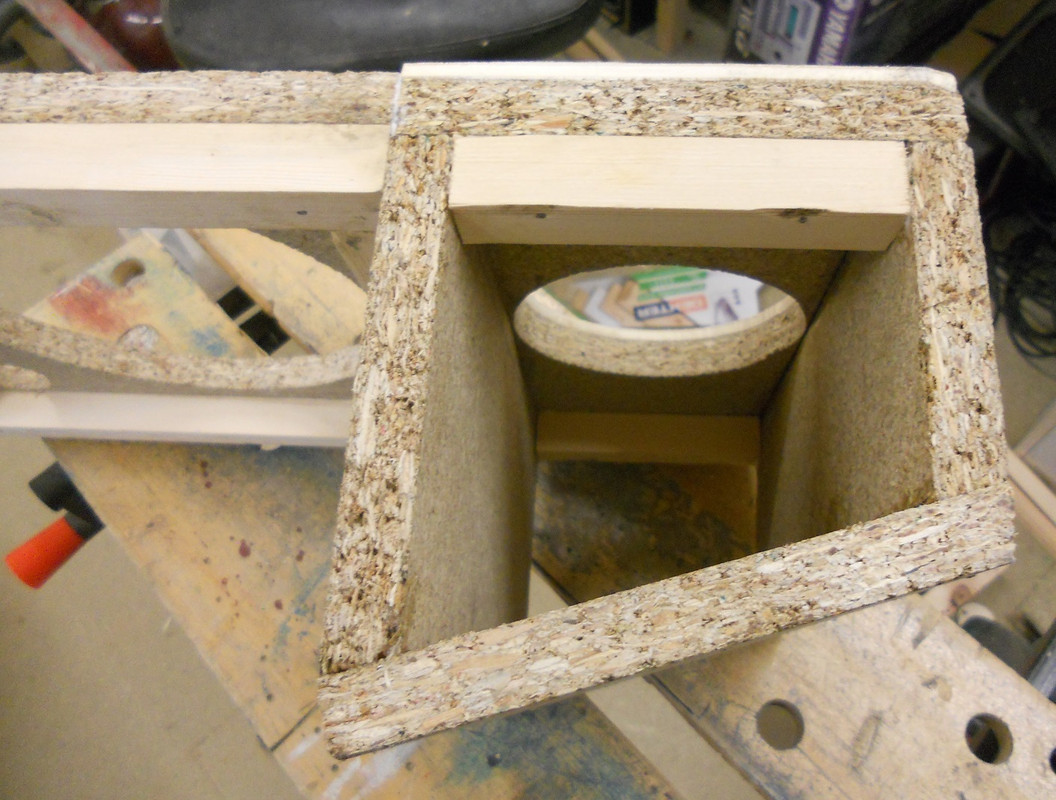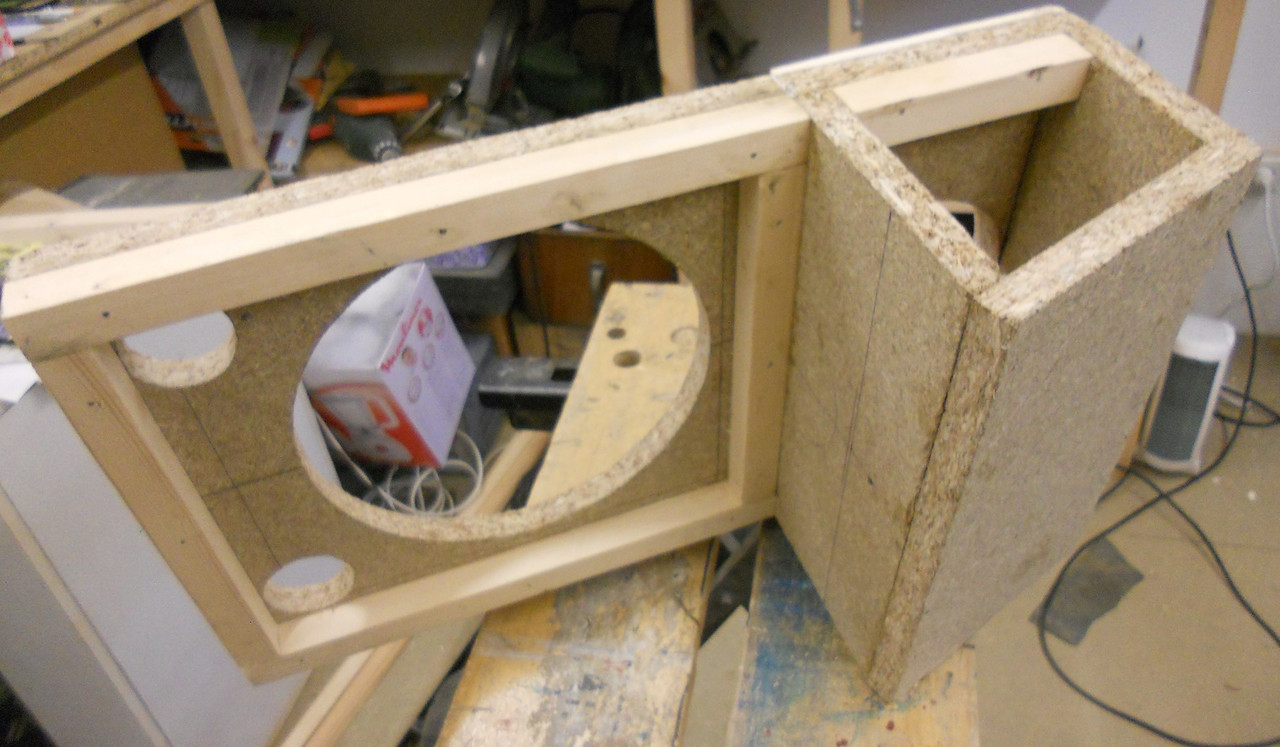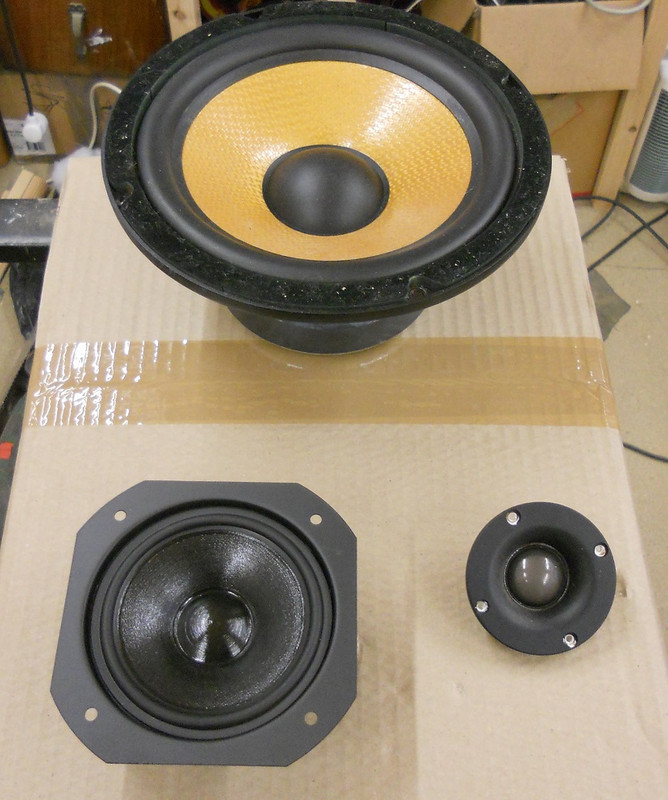The last time I made speakers on the forum was some Auratones, way back in 2011.
https://groupdiy.com/index.php?topic=43086.0
This will be way more challenging, but that's how we learn. These will be passive units with first order series crossovers.
I have wound some air coil inductors for nominal crossover frequencies of 500Hz and 5000Hz
I have some top end bass drivers from an old project that I will re-use, they are 8" Monacor SPH-200KE units.
https://www.monacor.com/products/components/speaker-technology/hi-fi-speakers/sph-200ke/
They only need a relatively small cabinet volume so they are ideal for monitors. they will be around 20Litres.
The mid ranges are Monacor MSH-115's
https://www.monacor.com/products/components/speaker-technology/hi-fi-midrange-speakers/msh-115/
They have one of the flattest frequency responses I've seen and I have them in my hi-fi speakers too.
As discussed in the drawing board thread, the main problem is minimising diffraction effects in the mid- treble region.
https://groupdiy.com/index.php?topic=68928.0
If your monitors have excessive dips and peaks you can't be expected to hear the detail or EQ effectively.
If you wonder why I'm bothering with passive monitors, take a look at the electronic junk inside this active monitor.
Do I really want my sound going through all this crap?
https://www.youtube.com/watch?v=dftkoD7LG0A
DaveP
https://groupdiy.com/index.php?topic=43086.0
This will be way more challenging, but that's how we learn. These will be passive units with first order series crossovers.
I have wound some air coil inductors for nominal crossover frequencies of 500Hz and 5000Hz
I have some top end bass drivers from an old project that I will re-use, they are 8" Monacor SPH-200KE units.
https://www.monacor.com/products/components/speaker-technology/hi-fi-speakers/sph-200ke/
They only need a relatively small cabinet volume so they are ideal for monitors. they will be around 20Litres.
The mid ranges are Monacor MSH-115's
https://www.monacor.com/products/components/speaker-technology/hi-fi-midrange-speakers/msh-115/
They have one of the flattest frequency responses I've seen and I have them in my hi-fi speakers too.
As discussed in the drawing board thread, the main problem is minimising diffraction effects in the mid- treble region.
https://groupdiy.com/index.php?topic=68928.0
If your monitors have excessive dips and peaks you can't be expected to hear the detail or EQ effectively.
If you wonder why I'm bothering with passive monitors, take a look at the electronic junk inside this active monitor.
Do I really want my sound going through all this crap?
https://www.youtube.com/watch?v=dftkoD7LG0A
DaveP




































![Electronics Soldering Iron Kit, [Upgraded] Soldering Iron 110V 90W LCD Digital Portable Soldering Kit 180-480℃(356-896℉), Welding Tool with ON/OFF Switch, Auto-sleep, Thermostatic Design](https://m.media-amazon.com/images/I/41gRDnlyfJS._SL500_.jpg)













